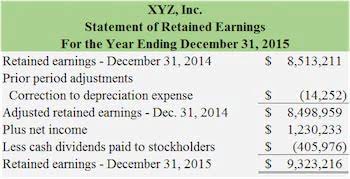
This number will make it easier to law firm chart of accounts reference specific accounts when recording financial transactions. The legal landscape is dynamic, requiring law firms to adapt to changes in regulations, client needs, and industry trends. Regularly reviewing and updating the Chart of Accounts is crucial to ensuring alignment with the firm’s evolving financial requirements.

Sample
- We believe knowing your company’s financial health is the key to maintaining control of your business.
- By downloading this sample you will be able to understand the structure of such descriptive account charts.
- Thus, if the universal COA is used for dual reporting purposes, adjustments will need to be made.
- Often, law firms strictly adhere to these predefined accounts, which leads to disorganized bookkeeping.
- Before drafting any kind of organizational chart you need to understand the policy that the organization has as a part of the company’s protocol.
Without proper attorney bookkeeping, it’s impossible to track what money is coming (and leaving your firm). This can cause serious issues and stunt your firm’s growth (more on that later). One of the most common decisions our clients make is choosing between Bench real estate cash flow or their CPA’s in-house bookkeeping services. To help you determine the best option for your business, we’ve rounded up the ins and outs of both here.
- Attorneys use the application to record billable and nonbillable time and expenses.
- The COA helps businesses manage their money wisely, giving them a tool for keeping track of cash flow, creating accurate financial reports, facilitating budgeting, and cost control.
- When setting up your chart of accounts, identify accounts that align with your law firm’s activities and reporting needs.
- You earn this money upon the completion of billable work, which can occur during the case as an invoiced bill or upon completion of the case as a final invoice.
- Also, many firms don’t realize how many accounts they must track to accurately reflect the firm’s value.
- Even though your state may have its own unique rules, there are a couple of things you should include in your clients’ chart of accounts in order to easily comply with most record keeping requirements.
How to handle IOLTAs in your bookkeeping
- This makes it challenging to use a general accounting solution for a law firm.
- Obviously these recommendations apply primarily to smaller companies rather than multinational enterprises with the budget to maintain separate, in-house teams dedicated to each standard and/or jurisdiction.
- It reflects the firm’s ownership value and can fluctuate depending on the firm’s profits, losses, or any distributions made to the firm’s owners.
- Addressing those compliance issues requires a proper, lawyer-specific chart of accounts.
Trust accounts hold client funds—such as retainers, settlement money, or court fees—that legally belong to the client until earned through billable work. This gives you the best of both worlds while bookkeeping making your law firm’s comprehensive accounting situation easier to manage. Some accountants record financial transactions, and some bookkeepers assist with business decisions and prepare financial statements. However, for our purposes, when we refer to “bookkeeping services,” we’re referring to tasks like recording income and expenses, reconciling bank accounts and credit card statements, and tracking payables and receivables.
Clio Accounting: Making legal accounting more approachable and efficient
This column shows the financial statement in which the account appears, and for a profit making business is either the balance sheet of the income statement. The Industrial Revolution resulted in technological advancements and changes in production methods. At this point, they demanded a more structured and standardized approach to accounting to help them track their finances, manage inventories, control costs, and assess their financial performance. So, a chart of accounts, as mentioned, organizes a company’s finances in an easy-to-understand way.

It also facilitates the reconciliation process by highlighting discrepancies and providing tools to investigate and resolve them, making the process of reconciling with third-party reports like bank statements much simpler. As a lawyer, you know that setting up a legal chart of accounts is essential for managing your law firm’s finances. The legal accounting process can be complicated, but a well-organized chart of accounts can help you keep track of your finances. Moreover, it ensures compliance with the Lawyer Trust Account (IOLTA) and other legal accounting regulations. A well-organized Chart of Accounts is a vital tool for effective financial management in law firms.

